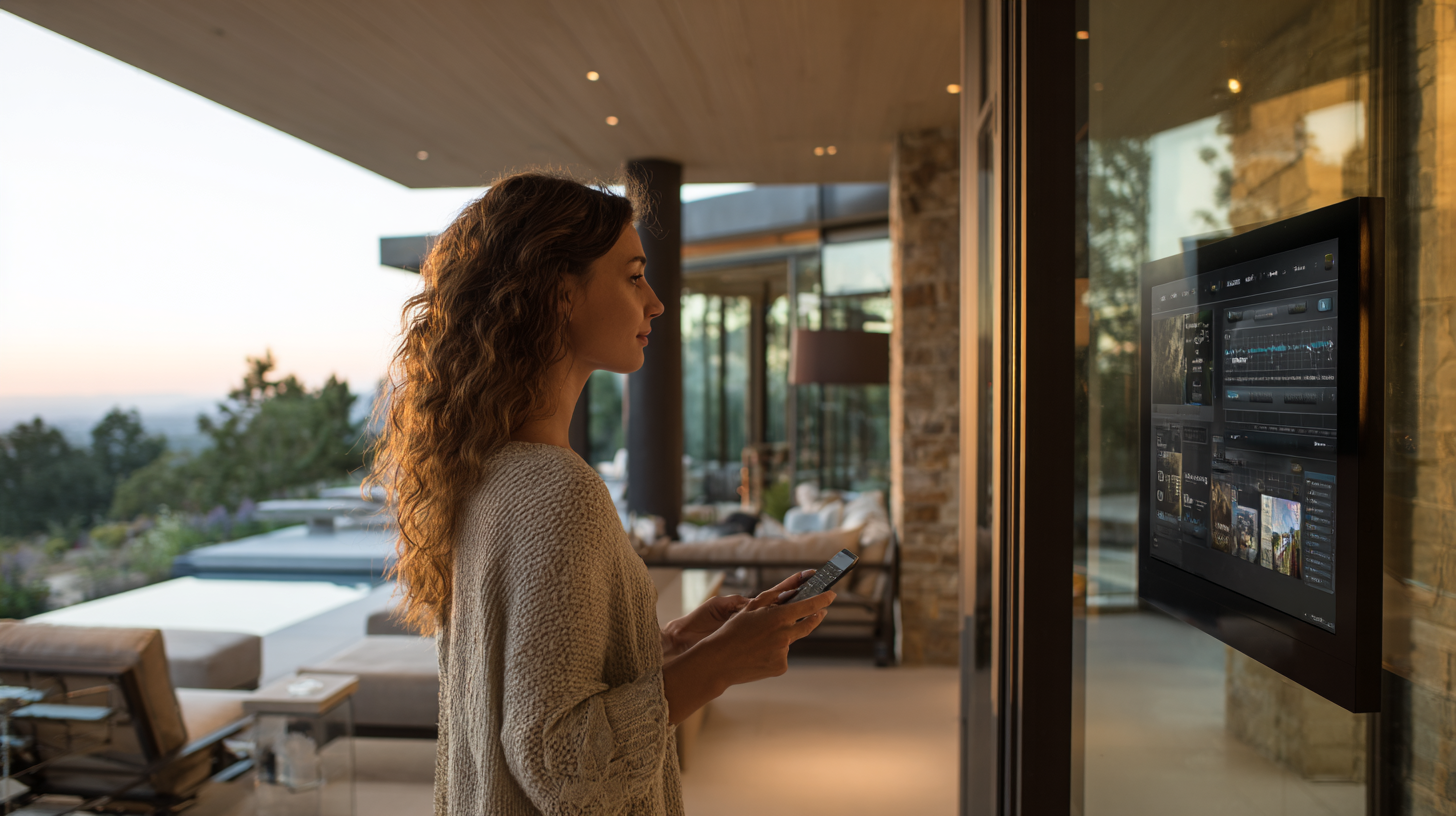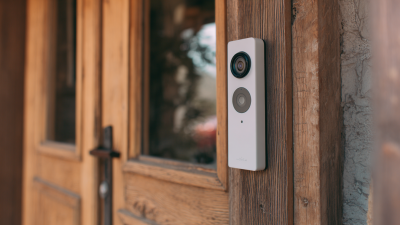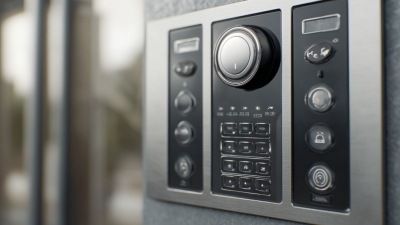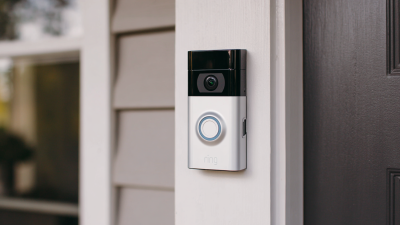As the smart home market continues to expand, the integration of Audio Video Intercom systems is becoming increasingly pivotal. According to a recent report by Research and Markets, the global smart home market is projected to reach USD 174 billion by 2025, with connected devices playing a significant role in enhancing home security and convenience.
 Audio Video Intercom systems stand at the forefront of this technological evolution, providing seamless communication and visual monitoring capabilities. The convergence of smart home technology with audio and video intercom solutions not only enhances home security but also offers homeowners unprecedented ease of access and control.
As consumers increasingly prioritize both safety and connectivity, understanding the future landscape of Audio Video Intercom integration becomes essential for industry stakeholders looking to innovate and drive adoption in this burgeoning market.
Audio Video Intercom systems stand at the forefront of this technological evolution, providing seamless communication and visual monitoring capabilities. The convergence of smart home technology with audio and video intercom solutions not only enhances home security but also offers homeowners unprecedented ease of access and control.
As consumers increasingly prioritize both safety and connectivity, understanding the future landscape of Audio Video Intercom integration becomes essential for industry stakeholders looking to innovate and drive adoption in this burgeoning market.
The rising demand for audio video intercom systems in smart home markets is significantly shaping the future of home integration technologies. As households become increasingly interconnected, the need for robust communication solutions has surged. Recent market studies project that the global intercom devices market will reach USD 6.5 billion by 2035, demonstrating a steady growth fueled by the integration of advanced security features and ease of use. Consumers are looking for seamless systems that enhance safety and convenience, making audio video intercoms an essential component of smart home ecosystems.

Tips for smart home integration include ensuring compatibility between devices and prioritizing user-friendly interfaces. It is crucial to select intercom systems that not only provide clear video and audio quality but also integrate effortlessly with other smart home technologies like security cameras and automation systems. Regularly updating the software of these devices can further enhance security and functionality, keeping users protected against vulnerabilities.
Furthermore, as technology continues to evolve, adopting intercom systems with advanced features such as mobile accessibility and remote monitoring can significantly enhance user experience. This aligns well with the ongoing trend of remote work and the increasing need for secure, interactive communication within smart environments. By incorporating these tips, homeowners can maximize the benefits of their audio video intercom systems while contributing to the overarching goals of smart home integration.
The integration of audio video intercom systems (AVIS) in smart homes is rapidly transforming the landscape of home security. According to a recent report from MarketsandMarkets, the global intercom systems market is expected to reach $3.21 billion by 2025, growing at a CAGR of 12.8%. This surge is largely due to the advanced features that modern AVIS provide, such as high-definition video surveillance, remote access control, and smart notifications. These elements enable homeowners to monitor their property in real-time, thereby enhancing security measures against potential intruders.

One of the key features enhancing home security is the two-way communication capability embedded in many AVIS. This feature allows homeowners to see and communicate with visitors before granting them access, effectively acting as a first line of defense. Additionally, integration with smart home ecosystems enables alerts to be sent directly to mobile devices, ensuring that users remain informed even when away from home. A study by Statista indicates that by 2024, over 50% of households will have adopted at least one smart security device, highlighting the increasing importance of such systems.
Tips: To maximize the effectiveness of your audio video intercom system, consider positioning cameras at key entry points to capture comprehensive footage. Regularly update your system's software to benefit from the latest security enhancements and features. Additionally, using a hardwired connection over Wi-Fi can improve reliability and reduce latency during video transmission.
As smart home technology continues to evolve, integrating audio video intercom systems with various smart devices has become a priority for enhancing home security and convenience. According to the latest report by Statista, the global smart home market is projected to reach approximately $237 billion by 2025, showcasing a growing trend towards more interconnected living spaces. Effective integration not only simplifies user interaction but also enhances the functionality of both intercom systems and smart devices.
To achieve seamless integration, it's essential to adopt best practices. Ensuring compatibility between devices is a fundamental step, as many systems operate on different protocols. Manufacturers like Amazon and Google have developed frameworks that support interoperability, enabling devices from various brands to communicate effectively. Furthermore, regular software updates are crucial for maintaining security and functionality; according to a recent Consumer Technology Association study, 70% of users reported improved performance when their devices were updated consistently.
**Tips for Effective Integration:**
1. Prioritize systems that offer open APIs for third-party integration.
2. Regularly check device compatibility and read user reviews to avoid integration issues.
3. Consider voice-controlled interfaces to streamline operation and increase accessibility throughout the smart home environment.
The rising trend of smart home integration with audio video intercom systems reflects an evolving landscape where convenience and security converge. Future advancements in this technology are likely to enhance user interactions through seamless connectivity. As wireless intercom systems gain traction, characterized by outdoor and indoor types, their compatibility with various smart home devices such as lighting, HVAC, and security systems will become increasingly relevant. This interconnectivity not only optimizes home management for users but also bolsters security measures, ensuring that homeowners can monitor and control their environments effectively.
Additionally, the integration of cutting-edge technologies such as real-time communication (RTC) will redefine how users interact with their homes. The incorporation of AI-driven features into intercom systems will allow for more intuitive responses, adapting to user preferences and situational contexts. As generative AI solutions emerge, the capabilities of intercom systems will extend beyond traditional uses, creating a more comprehensive platform for communication and management within smart homes. This evolution highlights a future where the boundaries between security, convenience, and technological innovation continue to blur, offering unprecedented experiences for homeowners.
| Features | Current Adoption Rate (%) | Future Growth Potential (%) | User Satisfaction Rating (1-5) | Interoperability with Other Smart Devices (%) |
|---|---|---|---|---|
| Video Calling | 45 | 60 | 4.2 | 85 |
| Two-Way Audio | 50 | 70 | 4.5 | 80 |
| Smartphone Integration | 65 | 75 | 4.1 | 90 |
| Remote Monitoring | 55 | 80 | 4.3 | 75 |
| Cloud Storage for Footage | 40 | 65 | 4.0 | 70 |
The adoption of smart home audio video intercom systems has seen significant growth recently, driven by the increasing demand for integrated home automation solutions. As more households recognize the benefits of enhanced security and convenience offered by these systems, the market is projected to expand further. The shift towards wireless intercom technology, including both outdoor and indoor models, is particularly notable, as consumers favor the flexibility and ease of installation that wireless devices provide.
Moreover, the COVID-19 pandemic has accelerated the trend towards smart home technologies, as remote work and social distancing measures have heightened the importance of home security and effective communication within households. As a result, statistics indicate a substantial uptick in the adoption of audio video intercom systems, with many homeowners investing in features that allow for seamless interaction with visitors at their doors and improved monitoring of their living spaces. In this rapidly evolving landscape, manufacturers are focusing on innovation and user-friendly designs to capture the growing customer interest in smart home integration.






